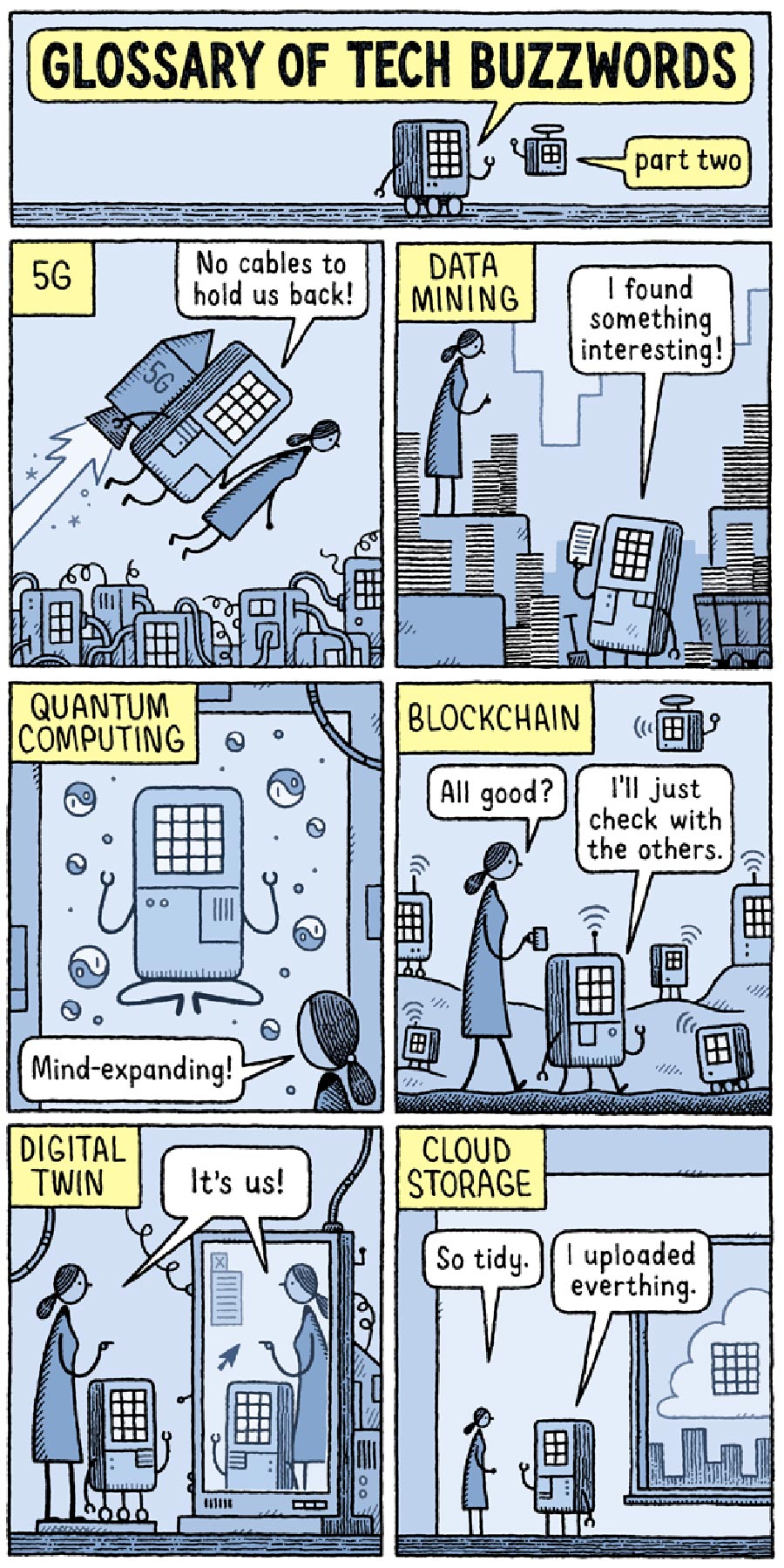Do you really know what the latest tech jargon really means? We’ve created a handy guide to bust those buzzwords

Moore's Law states that processor speeds or overall processing power for computers will double every two years. Since it was coined in 1970 the law has held true, with technological advancement speeding ahead year on year. Change at this rate requires a constant updating of the technological lexicon and the adoption of new buzzwords – so here are the latest terms we all need to get to grips with in 2020…
5G
A faster mobile connection. The fifth-generation wireless data network, 5G has the potential to run up to 100x faster than the current 4G networks. It’s even faster than cable connections, meaning our mobiles will be as fast as our laptops!
Why do we need to get even faster? The number of devices connected to the internet, otherwise known as the ‘Internet of Things’ (IoT), is growing to include things like autonomous vehicles. For everything to work properly we need the fastest possible network to rely on.
Data Mining
The process of using computers to extract useful patterns and knowledge from a massive set of data (which is called big data). Data mining uses statistics, artificial intelligence and machine learning to unearth the hidden patterns.
For example, data mining is what some online retailers use to make recommendations to you about what they think you will want to buy next. It can also be used to analyse large numbers of medical records and find patterns to help predict certain diseases and what causes & cures them.
Quantum Computing
Normal computers work by coding information as “bits” which are binary – they can be either on or off - a ‘1’ or a ‘0’. Early computers recorded these by making holes in strips of paper. A hole was a 1 and no hole was a 0. Other methods use black lines (barcodes), magnetic strips (cassette tapes) or electric charge (modern computer semiconductors) to record the 1s and 0s. The bits keep getting smaller, but we keep needing more and more. A computer with 1TB of memory needs approximately 8,000,000,000,000 bits. That’s a lot to fit in a mobile phone, and there is a limit to how small we can build them. To go further, a different approach is needed.
Quantum computers use “qubits” which can be recorded by systems much smaller than bits, such as single electrons or photons. These particles are so small they don’t follow the classical laws of physics and can be kept simultaneously as both 1 and 0. The ability to hold more information in less space is known as a “quantum speedup” and increases computing power exponentially. Although this doesn’t help tasks like email, quantum computers allow researchers to tackle hugely complex calculation problems involving large amounts of data like working through all the combination to improve a global supply chain or the thousands of chemical combinations to make a new drug.
Blockchain
Blockchain is the most reliable method of keeping accurate accounts. Think of it as a “digital ledger” that can’t be cheated. Traditional forms of record-keeping are entrusted to one entity to oversee, such as a treasurer or a bank. We have to trust them not to fiddle the books.
But blockchain stores the ledger across a network of computers, so any change of information is verified and recorded on every computer at the same time. Anyone with access to the network can see the ledger, removing the need for a treasurer.
This total security is why blockchain is the technology behind cryptocurrencies such as Bitcoin.
Digital Twin
Digital twins are exactly what they claim to be - computer replicas of physical systems.
We are familiar with computer simulations, in which people provide a set of starting conditions, and the computer makes a prediction about how the system will change. A digital twin is the next level – a simulation that keeps itself updated by collecting real data from the physical system. The result is a “living simulation” that can learn to improve itself, and also provide people with a real-time view of every aspect of the real system.
Cloud storage
Cloud storage is a computing model in which data is stored in large remote data centres and is accessed anywhere via the internet. The name "cloud" comes from the image of a cloud of data that floats above us everywhere we go. We can access our data anywhere, at any time, on nearly any device. It has been made possible thanks to faster connection speeds (like 5G) and reliable cyber security. We no longer need to carry around with us heavy laptops with large hard-drives, and our mobile telephones can be lighter. Many companies are also enjoying the benefits, as they don’t need to buy and maintain their own IT storage.